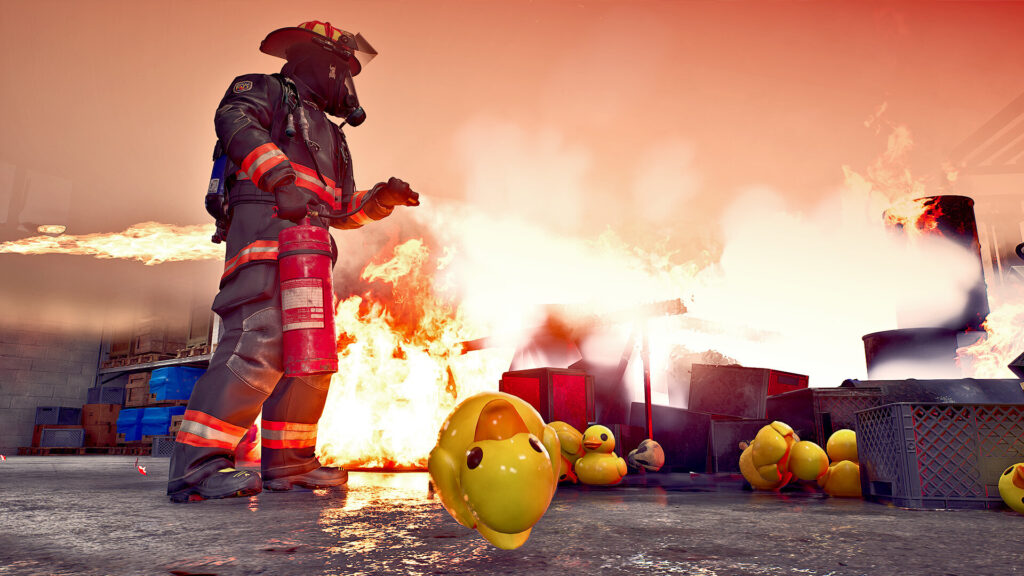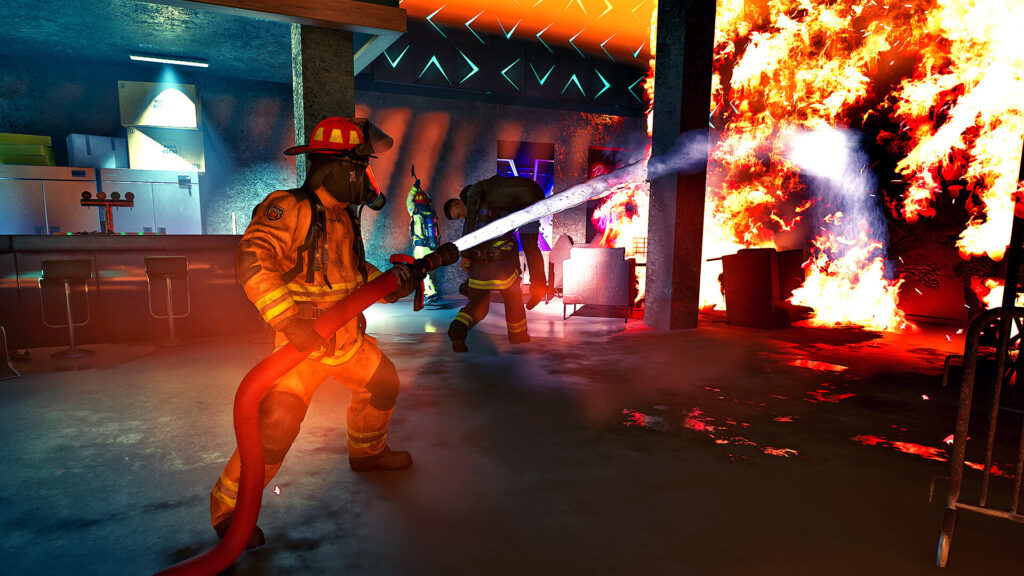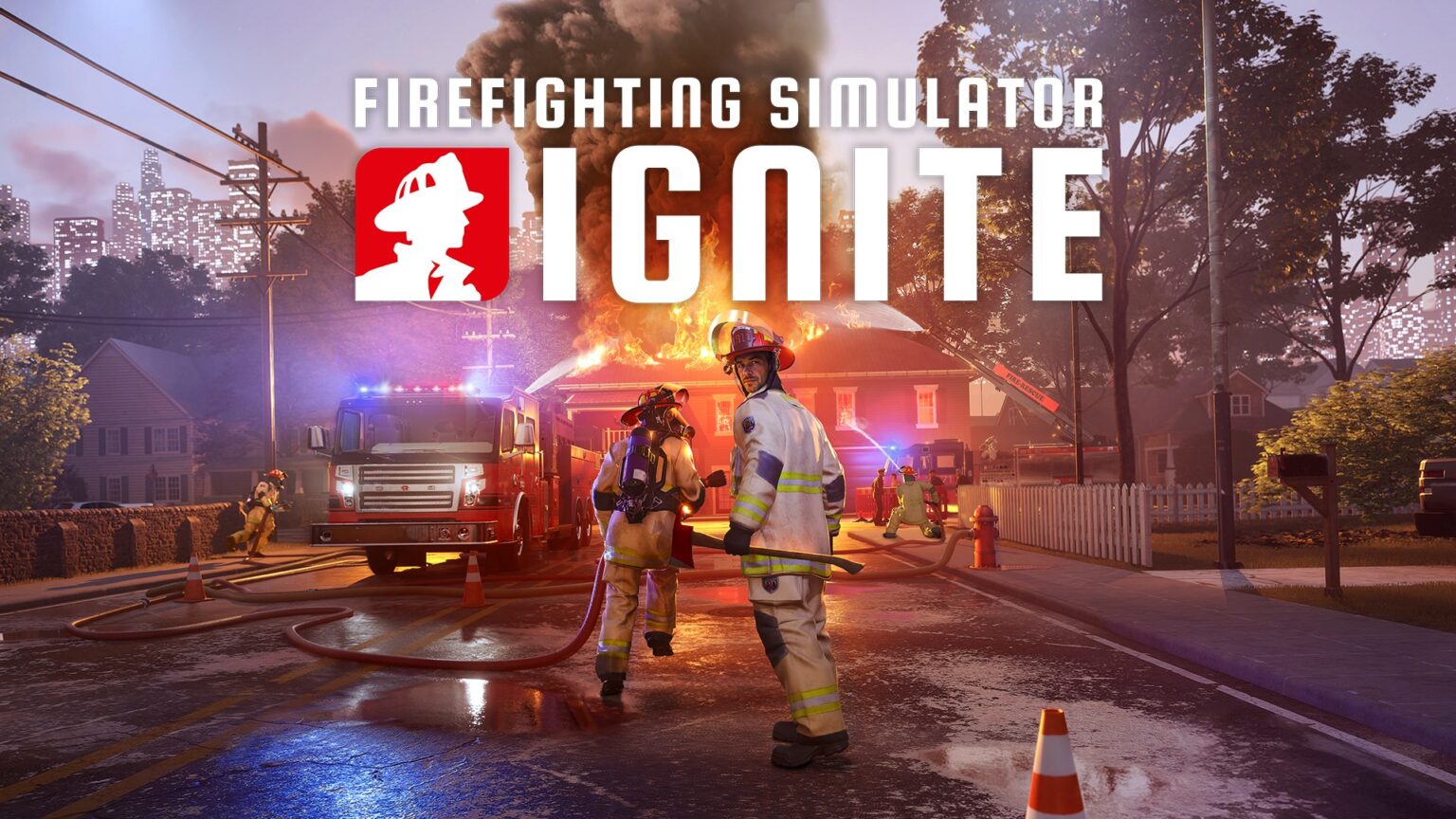Firefighting has always carried an undeniable drama: the rush to the call, the roar of flames, the fight against unpredictable danger. Few games have attempted to capture that experience with authenticity and depth. Firefighting Simulator: Ignite, developed by Weltenbauer. Software Entwicklung GmbH and published by astragon Entertainment, is one of the rare titles that throws players directly into the boots of U.S. firefighters. Released today on September 9, 2025, this Unreal Engine 5-powered sim blends realism, teamwork, and spectacle into one fiery package.
So, does it deliver the ultimate firefighter fantasy—or does it burn out before reaching its full potential? Let’s break it down.
A True Firefighter’s Perspective
Unlike most “simulators” that tack on the label loosely, Firefighting Simulator: Ignite makes a serious attempt to mimic the tactics, hazards, and tools of actual firefighting. The game is set in a sprawling Midwestern U.S. city, and each mission pulls you into situations ranging from apartment blazes and grease fires to flashovers, backdrafts, and explosive hazards.
You don’t just point a hose at flames until they vanish. Players must:
- Ventilate buildings to slow fire spread.
- Choose the correct extinguishing agent for different fire types.
- Use tools like Halligans, axes, and saws to break through obstacles.
- Keep an eye on smoke, which can signal an impending backdraft.
The attention to detail is evident—and for some reviewers with real firefighting knowledge, it’s a refreshing improvement over earlier attempts, such as The Squad. That said, the game still misses some realism marks. For example, dragging victims low to the ground (a real rescue technique) isn’t represented, hose setups are simplified, and things like PASS alarms or hydrant procedures could use refinement. Still, as a foundation, Ignite nails the atmosphere and builds a strong base for immersion.

The Heart of the Game: Teamwork
Every mission in Ignite reminds you that firefighting isn’t a solo effort. The game supports up to four-player co-op, where coordination is key: one player breaks down a door, another runs the hose line, while others rescue civilians or cool hot zones.
In single-player mode, AI crew members fill in, with mixed results. NPCs can handle smaller fires competently, but they sometimes ignore commands or act awkwardly during tense moments. Still, they ensure solo players can progress.
The true magic, though, lies in multiplayer. Whether you’re laughing at a chaotic rescue attempt gone wrong or celebrating a clutch civilian save in the final seconds, co-op missions create unforgettable moments. One reviewer recounted saving a teammate who collapsed in a bathroom, only for the floor to cave in and a toilet to fall on him—before he miraculously stood up and charged back into the flames. It’s this unpredictable blend of realism and hilarious chaos that makes co-op a standout feature.
The Fire Station Hub
Between missions, players regroup at the fire station hub. This headquarters acts as a breather from the chaos: you can relax, walk around, inspect your vehicle fleet, and select new assignments. The trucks themselves are a treat for firefighting enthusiasts—faithfully recreated Rosenbauer America models like the TP3® Pumper and Viper® ladder truck are all drivable.
Still, many players wish the hub had more depth. Being able to train, maintain equipment, or even interact with gear more meaningfully would give the downtime a stronger sense of immersion. And while it’s fun to hang out, some question why characters are always stuck in full turnout gear instead of casual uniforms when inside. Small details like gearing up for a call from scratch would make the station feel more alive.
Simulation and Realism
One of Ignite’s major selling points is its real-time fire simulation. Flames spread dynamically depending on ventilation, fuel, and structure. Smoke thickens hallways, heat builds dangerously, and water reacts with surfaces convincingly. The Unreal Engine 5 physics push the visuals to new heights, with fires that feel alive rather than scripted.
But authenticity isn’t just about visuals. Many players point out areas where the sim could go further:
- SCBA Air Supply – In reality, oxygen tanks run out fast. Here, air supply feels limitless, which removes a key survival element.
- Hose Management – Preconnected crosslays, realistic hydrant hookups, and proper hose advancement tactics are absent, leading to shortcuts that frustrate realism-minded players.
- Team Animations – Forcible entry or ladder placement feels simplified, with animations that show a lone firefighter tossing massive ladders effortlessly.
These issues don’t ruin the experience, but they highlight how Ignite sits in a middle ground: more authentic than arcade firefighting games, yet not a perfect sim.

Performance and Accessibility
Graphically, Ignite impresses. Fire and smoke effects look spectacular, lighting creates tense atmospheres, and building collapses add urgency. Yet, this comes at a cost. Some players report performance struggles even on powerful rigs, and optimization issues can cause frame drops or high CPU temps. Surprisingly, the game can run—albeit poorly—on devices like the Steam Deck, which shows its adaptability.
On the plus side, Weltenbauer’s dev team has a reputation for quickly addressing bugs and listening to community feedback. Many early issues have already been patched, giving players hope that performance will improve over time.
Room for Growth
As solid as the base game is, players are eager for more. Suggestions that frequently pop up include:
- EMS Integration – Since real firefighters spend most of their time responding to medical calls, adding EMS scenarios could enhance realism and variety.
- Expanded Autonomy – Letting players choose where to park trucks, set ladders, or manage equipment freely would improve immersion.
- Better AI – Smarter teammates who can back up hoses or assist in realistic ways.
- Station Life – Casual uniforms, gearing-up animations, and downtime activities.
The good news is that Ignite includes modding support via Mod.io on both PC and consoles. This opens the door for custom missions, maps, and potentially even community-made fixes or features.
Firefighting Simulator: Ignite isn’t perfect, but it’s the closest the genre has come to truly capturing the intensity, danger, and teamwork of firefighting. Its dynamic fire simulation, impressive trucks, and co-op chaos create some of the most thrilling—and often hilarious—moments in recent simulation gaming.
Yes, the AI can be clumsy, animations need polishing, and optimization still has room for improvement. But for anyone who’s ever wanted to charge into a burning building with a hose, chop down doors with an axe, or coordinate a daring rescue with friends, Ignite delivers an unforgettable experience.
If you’re looking for pure realism, you may nitpick its inaccuracies. But if you want a fiery blend of simulation, spectacle, and co-op camaraderie, then suiting up in Ignite is worth every second.
✅ The Good
- Impressive fire and smoke simulation
- Authentic tools, trucks, and tactics
- Thrilling 4-player co-op gameplay
- Great atmosphere and mission variety
- Modding support for future content
❌ The Bad
- Optimization issues on some systems
- AI behavior can be frustrating
- Lacks EMS or broader firefighter duties
- Some firefighting procedures are oversimplified
Firefighting Simulator: Ignite: A fiery, fun, and authentic-enough simulator that shines brightest when played with friends. With updates and mod support, it has the potential to become the definitive firefighting game. – Obsidian


